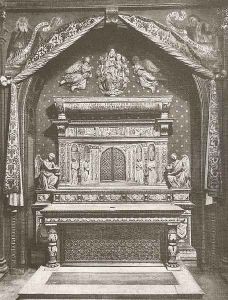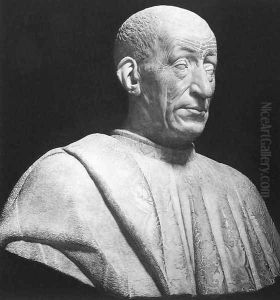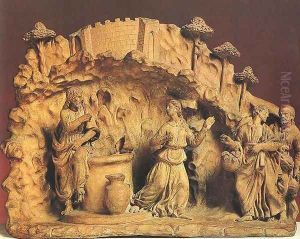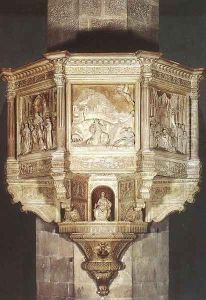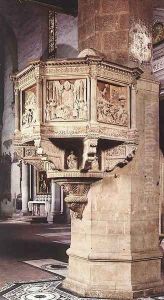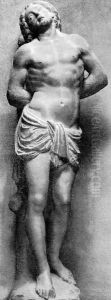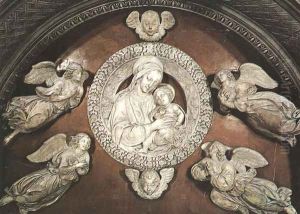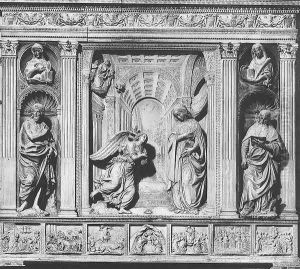Benedetto Da Maiano Paintings
Benedetto da Maiano was a renowned Italian sculptor and architect of the early Renaissance period, born in 1442 in the town of Maiano, near Florence. He was the elder brother of the equally famous Giuliano da Maiano, with whom he often collaborated. Benedetto initially trained as a woodcarver, but he soon turned to marble and became one of the most prominent sculptors of his time.
Maiano's work is characterized by its elegance and attention to detail, blending classical Roman art with the emerging Renaissance ideals. He showed a particular talent for portraiture, creating lifelike busts that captured not just the physical likeness of his subjects but also their personalities and status. Among his most famous works are the bust of Filippo Strozzi, a powerful Florentine banker, and the tomb of Filippo Strozzi in the Church of Santa Maria Novella in Florence.
In addition to his sculptures, Benedetto was also an accomplished architect. He took over the construction of the Palazzo Strozzi in Florence after the death of his brother Giuliano, who had initiated the project. Benedetto's contributions to the Palazzo Strozzi included the design of the courtyard, which is considered one of the finest examples of Florentine Renaissance architecture.
Maiano's religious works also garnered much acclaim. His wooden relief carvings for the pulpit of Santa Croce in Florence are particularly notable for their expression and intricate detail. His architectural and sculptural skills combined to great effect in the creation of various altarpieces and church furnishings.
Despite the success of his career, Benedetto da Maiano did not leave a large workshop or many followers to continue his style. His influence, however, can be seen in the work of later Renaissance artists who were inspired by his ability to fuse sculpture and architecture into harmonious works. Benedetto da Maiano died in 1497, leaving behind a legacy of work that continues to be studied and admired for its craftsmanship and artistic beauty.
